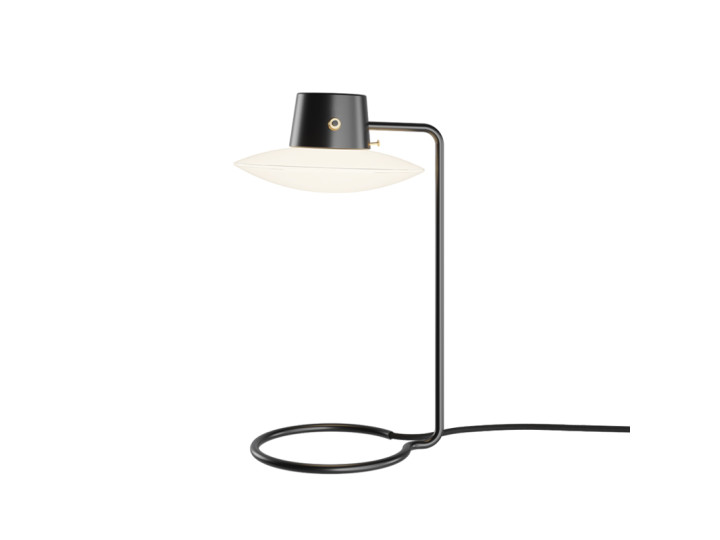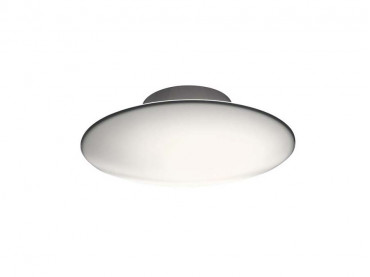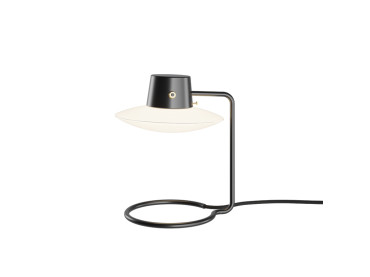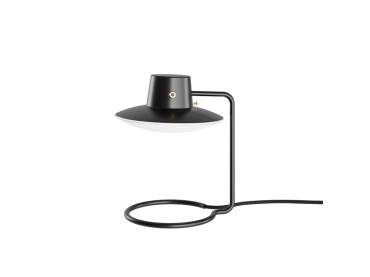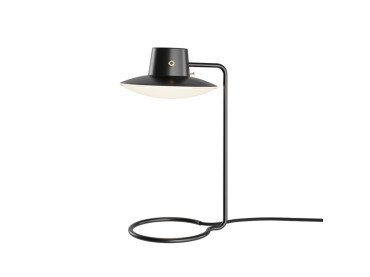AJ OXFORD H 41 table lamp
-
Arne Jacobsen
-
Louis Poulsen
- LP063 livraison sous 2 weeks
AJ Oxford is a table lamp with a sleek and graphic design, originally created to illuminate the sumptuous dining hall of St Catherine's College in Oxford, designed by Arne Jacobsen and inaugurated in 1963. Today, the AJ Oxford lamp continues to shine in this iconic modernist building.
The renowned brand Louis Poulsen has reissued this timeless lamp with an elegant stem that seamlessly blends into a circular base. With a palette of monochrome colors, it can adapt to all types of interiors. The AJ Oxford lamp is available in several versions, with or without a metal upper shade, and in two different heights to meet all requirements.
Thanks to its blown opal glass, the AJ Oxford Louis Poulsen lamp diffuses a soft and harmonious light on the surface where it is installed. The version without the upper shade even creates a halo of light around the luminaire, adding a touch of magic to your room.
| Year | 1963 |
| Dimensions | Ø 22 x H 41,3 cm, base Ø 18,5 cm. E14 bub |
| Material | Blown opal glass, steel, aluminium, brass |
| Style | Classique Neuf |
| Origin | Denmark |
Arne Jacobsen
Denmark (1902-1971)
Arne Jacobsen trained at the Technical School and continued his training at The Royal Danish Academy of Fine Arts’ School of Architecture, graduating in 1927. He was employed with the city architect in Copenhagen 1927-29 and then established his own design practice. 1956-65 he was a professor at The Royal Danish Academy of Fine Arts’ School of Architecture. Arne Jacobsen worked as an architect and designer.
During his education at the School of Architecture he was influenced by neo-classicism, but around 1930 he helped introduce functionalism in Denmark. Inspired by international functionalism, he in the following years designed the white housing estate Bellavista in Klampenborg (1934), the town halls inAarhus (1942) and Rødovre (1956), SAS Royal Hotel in Copenhagen (1960) and St. Catherine’s College in Oxford (1964). Jacobsen believed that each element of a house should be shaped by the architect. This is why most of his furniture was developed in connection with particular building projects. The three-legged stacking chair, the Ant, from 1952 (RP00619) was designed for the new small Danish dining kitchens and was simultaneously also used in canteens, the first time in the pharmaceutical factory Novo’s canteen. The Ant, a stacking chair in moulded veneer, was Denmark’s first actual industrially produced chair and soon had four-legged follow-ups such as the 7 and the Seagull (RP03214).
For SAS Royal Hotel he designed the organically shaped foam plastic chairs the Egg, the Swan (RP00128) and the Drop (RP01005), and for the teachers’ table in the dining room at St. Catherine’s College, the monumental Oxford chair (RP02993).
Arne Jacobsen is one of his generations’ great architects and the sculptural chair the Ant, the Egg and the Swan put him on the map as a world-class designer.

